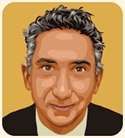This week brought another tragic murder of a journalist in Mexico. Armando Rodriguez was a well-known crime editor for El Diario in the violence-ridden, Mexican border-town of Ciudad Juarez. The hit (conducted while he was waiting to take his daughter to school, by gunmen who sped off) prompted strong condemnations by international NGOs and the OAS Inter-American Commission’s Special Rapporteur for Freedom of Expression.
Yet despite the international outrage at the murder of a journalist doing his job, this isn’t an easy case. We can safely assume that the murder was committed by extra-governmental groups–either narcotraffickers or corrupt police or military acting unofficially. According to the Committee to Protect Journalists, this is the fifth murder or Mexican journalist. The vast majority of such cases go unsolved.
The problem is what can be done to protect journalists when the state is itself attempting to regain control over the country. Much of the traditional human rights perspective has been based on protecting journalists and civil society from the government. But this is something more sinister and complex: how do you protect journalists from lawless groups that the government (presumably) is trying to control itself?
Indeed, much of the attention on protecting journalists–both by NGOs and bloggers–has focused on the very European liberal idea and of journalists against an uncontrollably aggressive, intrusive state. What to do when the state is so weak it can’t protect its own citizens?
A number of NGOs in countries where governmental presence in rural areas remains weak have grappled with this effort, such as in Peru and Colombia. But even their efforts depend on a responsive and responsible government that is willing to respond to domestic pressure and attention from the international community and provide threatened, at-risk individuals with the necessary security. Colombia, under President Alvaro Uribe, has stepped up such efforts, and Mexico has as well. The question is–in the instance in which government and journalists are linked in a common cause (to root out corruption and defend the rule of law)–how to best protect citizens when the government itself is suffering its own body blows.
One closing note: The Summit of the Americas. This was the subject of my last blog post and it produced……exactly zero response. Now, much of that–I don’t doubt–has to do with the newness of the Americas Quarterly blog. But I also suspect that part has to do with the distance of the whole summit process from the realities of American (in the broadest sense) citizens and the media. In fact, the Summit only seems to get attention when there’s a huge demonstration or division (see Quebec in 2001) or Mar del Plata in 2005.
So what about the April 2009 Summit? It will be the first opportunity for President-elect Barack Obama to meet with hemispheric leaders. This could be an important step in defining the new agenda for the Americas–especially if you strip away all the platitude-filled “mandates” mentioned earlier. But no one has paid attention to it–even those who write about the Americas and U.S. policy. A brief glance at the major Latin America blogs reveals that the Summit hasn’t even scored a mention even when talking about U.S. policy under the new administration. And mainstream Hispanic/Latin America media have ignored it as well.
The only ones who haven’t ignored it are the multilateral organizations that devote their institutional lives to promoting it. But these are dedicated to the big-“mandated” themes.
Whatever happened to the basic goal of summitry of even just getting new leaders to develop a personal, pick-up-the-phone type of relationship? Nothing wrong with that, especially today. But does anyone care? Have we larded up the whole process too much and reduced to a topic of multilateral institutions, specially designated offices in foreign affairs bureaucracies and think tankers? In the early years, summit architects believed in this as a forum for bringing attention to the region. Can it continue to do so? If so, how?
Summit mavens show us the way!





